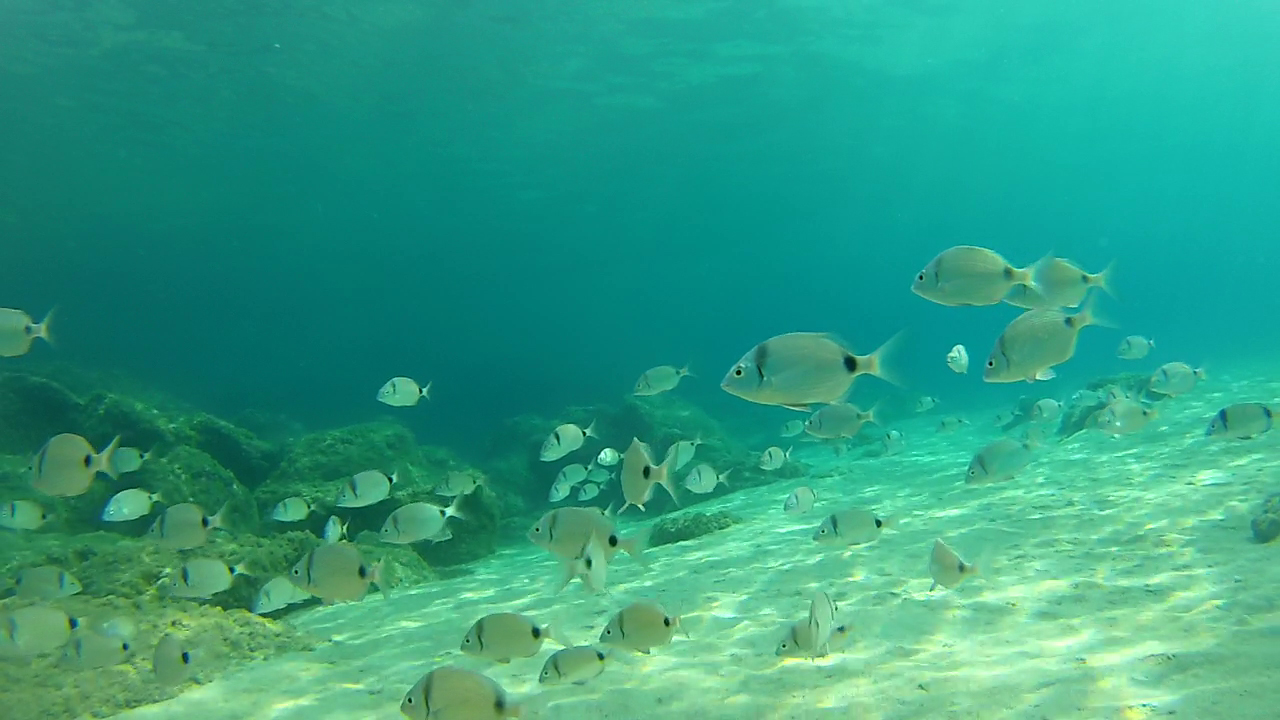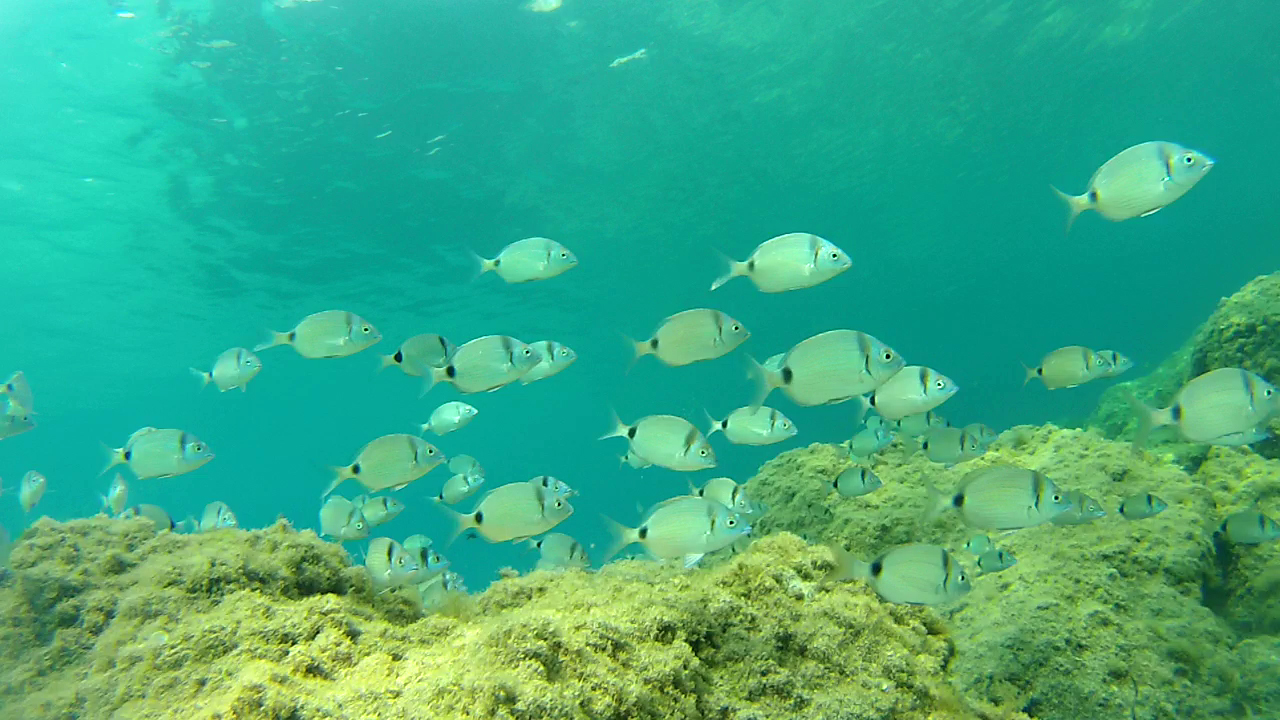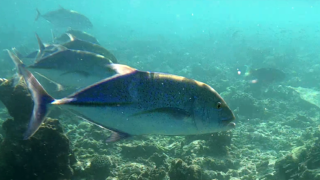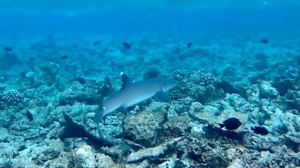Sarago fasciato two-banded sea bream Diplodus vulgaris intotheblue.it
Diplodus vulgaris belongs to the class Osteichthyes, subclass Actinopterygii, order Peciformes, suborder Pecoidei, family Sparidae.
Oval-shaped, like all the sparidae, it generally has a size around 20-25 cm in adulthood. The mouth is very small. Predominantly carnivorous feeds on small crustaceans and worms.
It is easily distinguished from the other sparidae for the two dark spots in the shape of a saddle, one in the anterior part between the dorsal fin and the eye, the other in the caudal area, the back is gray mind the hips and the belly have a silvery color.
It is common throughout the Mediterranean Sea and the eastern Atlantic Ocean to Senegal. It prefers the shallows characterized by rocky areas where it easily finds shelter inside the burrows. It is a fish that loves social life and in fact we find it in herds both among its own similar and with other fish of different species.
It is a gregarious species, sometimes forming groups composed even by many specimens. In the shallows, it often creates smaller groups even with other similar species.
Adults feed on benthic invertebrates, crustaceans, worms and mollusks. It is considered an important food fish.
Distribution and habitat
This species is widespread in the Mediterranean Sea, in the Black Sea and in the Eastern Atlantic Ocean, at depths of 0 to 160 m, more commonly between 0 and 30 m.
It inhabits rocky, sandy bottoms and seagrass beds. On sandy bottoms, it can be often found following species that dig the sand and trying to steal their food.
The Sparidae are a family of fish in the order Periformes, commonly called sea breams and porgies. The sheepshead, scup and red seabream are species in this family. Most sparids are deep-bodied compressed fish with a small mouth separated by a broad space from the eye, a single dorsal fin with strong spines and soft rays, a short anal fin, long pointed pectoral fins and rather large firmly attached scales. They are found in shallow temperate and tropical waters and are bottom-dwelling carnivores.
There are hermaphrodites in the Sparidae. Protogyny and protandry appear sporadically through this lineage of fish. Simultaneous hermaphrodites and bi-directional hermaphrodites do not appear as much since Sparidae are found in shallower waters. Species of fish that express a hermaphroditic condition usually “lack a genetic hardwire”, therefore ecological factors play a role in sex determination.
Most species possess grinding, molar-like teeth. Some of the species, such as Polysteganus undulosus, have been subject to everfishing, or exploitation beyond sustainable recovery. Sarago fasciato two-banded sea bream Diplodus vulgaris intotheblue.it
 English
English Italiano
Italiano











